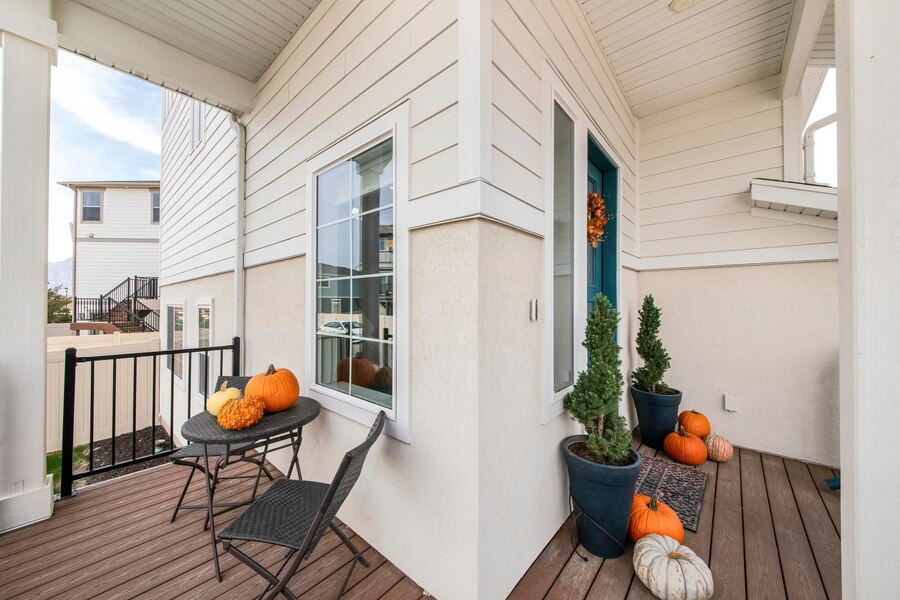
Siding vs. Stucco: Which Is Best for Your Home?
When it comes to choosing the right exterior for your home, two popular options often come up: siding and stucco. Both have their own set of advantages and drawbacks, and selecting the best one for your home can make a significant difference in its appearance, maintenance, and overall value. In this guide, we’ll dive deep into the pros and cons of siding and stucco, helping you make an informed decision that suits your needs and preferences.
Understanding Siding
What Is Siding?
a barrier against weather elements such as rain, wind, and snow, helping to safeguard the underlying structure from potential damage. Siding comes in various materials, each offering different benefits. For instance, vinyl siding is known for its low maintenance and affordability, while wood siding provides a classic, natural appearance. Fiber cement and metal siding offer durability and resistance to pests and extreme weather conditions.
Beyond its protective function, siding significantly influences the overall aesthetic of a home. With options ranging from traditional wood to modern vinyl and metal finishes, siding can enhance a house’s curb appeal and reflect personal style preferences. Choosing the right type of siding can transform the appearance of your home while ensuring it remains well-protected against the elements.
Types of Siding
Vinyl Siding
Vinyl siding is a popular choice for homeowners due to its affordability and minimal upkeep. Made from PVC, it is highly durable and resists moisture, fading, and peeling. Available in a wide array of colors and styles, it offers versatile design options.
Wood Siding
Wood siding provides a timeless and natural aesthetic, enhancing your home’s charm with its classic look. It can be customized through staining or painting to match your design preferences. However, it requires regular maintenance to address issues like rot and insect damage.
Fiber Cement Siding
Composed of a blend of cement, sand, and cellulose fibers, fiber cement siding offers a wood-like appearance with enhanced durability. It resists pests, rot, and harsh weather conditions, making it a long-lasting option that maintains its appearance over time.
Metal Siding
Metal siding, typically crafted from aluminum or steel, is renowned for its strength and resistance to fire and pests. It requires minimal maintenance and is highly durable. However, it can be susceptible to denting and may require occasional repairs.
Pros of Siding
- Variety of Options: With different materials and styles available, you can find siding that matches your aesthetic preferences and budget.
- Low Maintenance: Many types of siding, especially vinyl and metal, require minimal upkeep. Regular cleaning is often sufficient to keep them looking good.
- Durability: Siding materials like fiber cement and metal are known for their durability and long lifespan.
- Cost-Effective: Vinyl siding, in particular, is an affordable option that provides good protection and aesthetic appeal without breaking the bank.
Cons of Siding
- Environmental Impact: Some siding materials, like vinyl, are not environmentally friendly as they are derived from plastic.
- Damage and Repair: While durable, siding can be susceptible to damage from extreme weather or impacts. Repairs can be necessary, especially for materials like wood.
- Color Fading: Vinyl and other synthetic siding materials can experience color fading over time, particularly in areas with intense sun exposure.
Exploring Stucco
What Is Stucco?
Stucco is a versatile exterior finish made from a blend of sand, lime, and cement. This plaster-like material is applied to the walls of buildings to create a protective and decorative layer. Stucco can be finished in a variety of textures, from smooth to rough, and it can be tinted in numerous colors to match architectural styles and personal preferences. Its long history dates back centuries, reflecting its timeless appeal and functionality.

Known for its durability, stucco withstands harsh weather conditions and offers significant protection against the elements. Additionally, its aesthetic flexibility allows it to complement various design styles, making it a popular choice for both traditional and contemporary homes. With proper maintenance, stucco can maintain its appearance and protective qualities for many years.
Pros of Stucco
- Aesthetic Appeal: Stucco offers a unique and elegant appearance that can enhance the curb appeal of your home. It can be finished in various textures and colors to suit your style.
- Durability: Stucco is known for its durability and resistance to weather elements. It can withstand harsh conditions and is less likely to be damaged by pests.
- Energy Efficiency: Stucco has insulating properties that can help regulate indoor temperatures, potentially reducing heating and cooling costs.
- Low Maintenance: Once applied, stucco requires minimal maintenance compared to some other exterior materials.
Cons of Stucco
- Cost: Stucco tends to be more expensive than many siding options, both in terms of materials and installation.
- Cracking: Stucco can develop cracks over time due to shifts in the building structure or settling. These cracks need to be repaired to prevent water infiltration.
- Installation Time: Applying stucco can be a lengthy process, as it requires multiple layers and curing time. This means that the installation process may take longer compared to siding.
- Moisture Issues: If not properly applied or maintained, stucco can trap moisture against the wall, leading to potential water damage.
Comparing Siding and Stucco
Aesthetic Considerations
When it comes to aesthetics, both siding and stucco offer distinct looks. Siding provides a more contemporary and varied appearance, with options ranging from classic wood to modern metal. Stucco, on the other hand, delivers a timeless, textured look that can be customized with different finishes.
Maintenance and Upkeep
Siding generally requires less maintenance than stucco, especially if you choose vinyl or metal options. Stucco, while low-maintenance once applied, can require more frequent repairs if cracks develop. However, with proper care, stucco can last for decades.
Cost
Siding options like vinyl and fiber cement tend to be more budget-friendly than stucco. Stucco’s higher cost is often justified by its durability and unique appearance, but it’s essential to weigh this against your budget and long-term plans.
Durability
Both siding and stucco are durable, but they excel in different ways. Stucco is highly resistant to weather and pests but can crack over time. Siding materials vary in durability; fiber cement and metal offer strong protection, while vinyl may need more frequent replacement.
Stucco’s insulating properties can contribute to energy savings by regulating indoor temperatures. Siding materials generally do not offer the same level of insulation, although some options can be combined with insulation panels for better efficiency.
Making the Right Choice for Your Home
Choosing between siding and stucco depends on various factors, including your budget, aesthetic preferences, maintenance willingness, and the climate in your area. Here are a few tips to help you decide:
Evaluate Your Budget
Consider both the initial installation costs and long-term maintenance expenses. If budget is a primary concern, vinyl siding might be the best option.
Consider Your Home’s Style
Match the exterior material to the architectural style of your home. Stucco is great for Mediterranean or Southwestern styles, while siding can complement a wide range of designs.
Assess Your Climate
In areas with extreme weather conditions, durable siding materials or stucco might be more appropriate. Consider the material’s resistance to your local climate.
Think About Maintenance
If you prefer low-maintenance options, vinyl siding or well-applied stucco can be excellent choices.
Consult Professionals
Always seek advice from professionals who can assess your home and provide recommendations based on your specific needs and preferences.
Siding vs Stucco: What’s Best for Your Home’s Look
When deciding between siding and stucco for your home’s exterior, consider how each option impacts your home’s overall look. Siding offers a wide range of materials and styles, from classic wood to modern vinyl, allowing for versatile design possibilities. Its appearance can be customized to match various architectural styles, enhancing your home’s curb appeal.
Stucco, on the other hand, provides a unique, timeless aesthetic with its smooth or textured finish. Available in various colors and textures, stucco can give your home a distinctive look that stands out in any neighborhood. Both materials have their own visual appeal, but the best choice depends on your design preferences and how you want your home to reflect your style.
Conclusion
Choosing between siding and stucco depends on your home’s style, durability needs, and maintenance preferences. Siding offers a range of materials and colors, providing versatility and ease of upkeep, making it a practical choice for various looks. Stucco delivers a classic and textured appearance that can enhance your home’s charm with its timeless appeal. For personalized advice and expert installation in Akron, OH, contact EZ Window Solutions of Akron at (440) 773-4396. Expert guidance can help in making the best choice for your home’s exterior, ensuring it not only looks great but also stands up to the elements.


Write a Comment